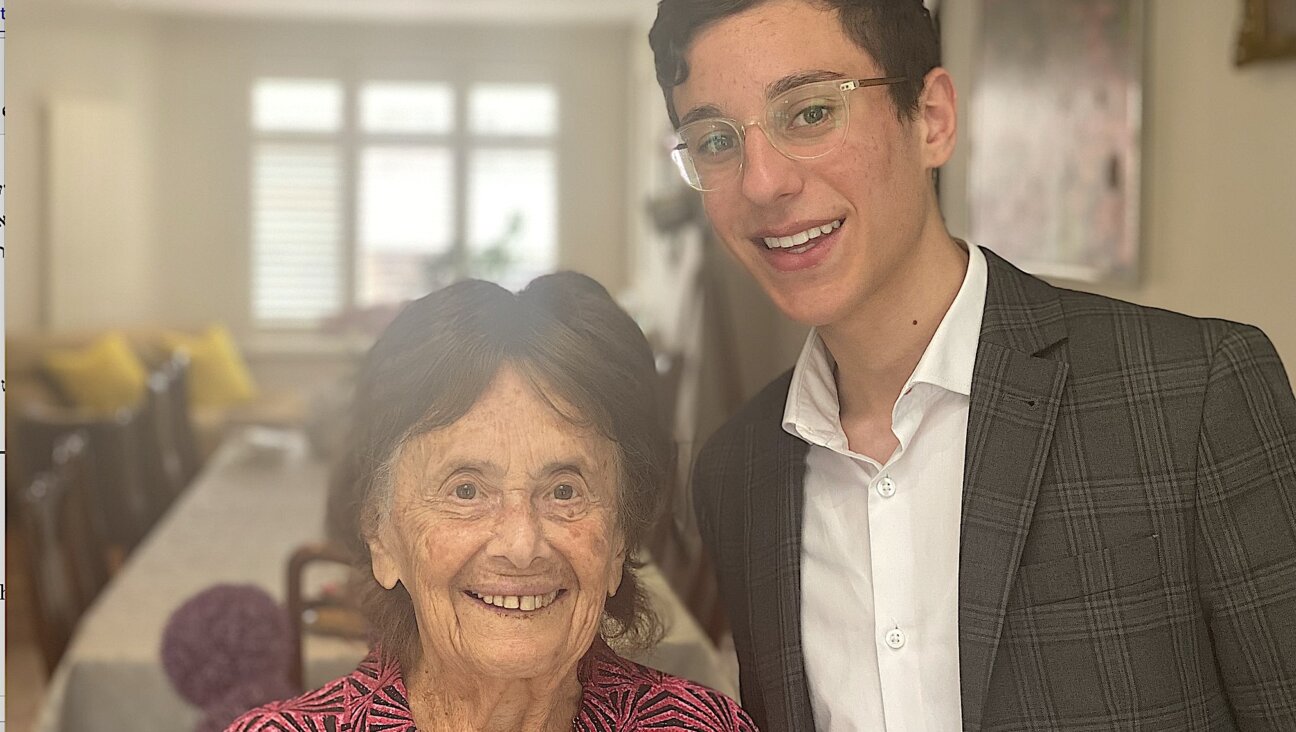November 24, 2006
Levi’s World Was Complex
An October 27 Shmooze item refers to Primo Levi’s “death by suicide” (“Primo Voted Number One”). The cause of Levi’s death was a fall into a deep stairwell. Whether that fall was intentional or, as is more likely, accidental, has never (and cannot) be determined.
Levi’s work explores the dreadful humanness of the Nazi camps. For others, the suicide hypothesis affirms their own view — that the Shoah was an intervention of some cosmic evil, a force beyond prior experience, an event beyond comparison or analysis. If Levi took his own life, these conclude, he was finishing what the Nazis began. He was not, as the title of his first book insists, a man, but a mythic victim who, in Elie Wiesel’s unfortunate formulation, “died at Auschwitz 40 years later.”
These positions contradict not only Levi’s writings but his avowed purpose in the latter part of his career. On December 31, 1986, only months before his death, Levi told me, “It would be a mistake to keep circling around the Shoah, excluding every other thing.”
In his last book, “The Drowned and the Saved,” Levi explored the disturbing “grey zone” between victims and perpetrators, the absence of a bright, straight line between good and bad. As he put it, “the world is complicated.” It is just this complexity that the suicide hypothesists seems unable to abide. Not only out of respect to Levi, but to avoid granting evil a victory precisely where it failed, we must be careful not to take their assertions as fact.
Russell Miller
New York, N.Y.
Give Clark Her Day in Court
Kathleen Peratis’s November 3 opinion column on the participation of Jews in the radical politics of the 1960s offers a glimpse of Judy Clark, now serving three consecutive sentences of 25 years in the Bedford Hills prison (“Lives Lost Amid the Slogans of a Time Long Ago”).
I’ve been visiting Clark in that prison for more than a year, drawn there by an interest in the questions raised by women in prison, how they get there, and what they do with their lives inside. Forward readers may be interested to know that Clark has a more deeply Jewish story than simply her Jewish identity by accident of birth.
Judy Clark today is no longer the ideological revolutionary who went into prison 25 years ago. That she could change as profoundly as she has is a story of repentance, of teshuva, of tzedakah, and of deepening Jewish study.
On the issue of chutzpah, though, I beg to differ. The issue raised in Clark’s appeal was one of constitutional rights that ought to be of concern to all of us. If you choose to represent yourself and you are not present in the courtroom, you are not represented. Judge Shira Sheindlin should be congratulated for affirming the right of anyone to be represented in court — regardless of their behavior, their lunatic political convictions, or their misguided decisions. If the result was surprising, it may be because we have all lowered our expectations of what we deserve in a court of law.
Madeline Lee
New York, N.Y.
Toys Can Be Used As Shoah Education Tools
While it is always flattering to see one’s past articles quoted on the front page of the Forward, a November 17 article erroneously implies that I disapprove of the recent children’s workshop led by architect Steven Schwartz in which Lego blocks were used to construct a scale model of the Warsaw Ghetto (“Lego My Ghetto: Sparks Fly Again as Kids Craft Shoah Model”).
In 2002, I was sharply critical of the “Mirroring Evil” exhibition at the Jewish Museum. That ill-conceived show included, in addition to the “Lego Concentration Camp Set,” one artist’s “Giftgas Giftset” of poison gas canisters packaged with Chanel, Hermes and Tiffany & Co. designer logos; the historical photograph of emaciated Buchenwald inmates into which another artist digitally inserted himself holding a can of Diet Coke; and my personal favorite, six glorifying plaster busts of the notorious Auschwitz SS doctor Josef Mengele. I believed then and believe today that individually and together, these works desecrated and trivialized the Holocaust.
Nothing I have read or heard about the workshop at the United Jewish Communities of MetroWest, New Jersey, suggests that Schwartz was anything but reverential and thoughtful in his effort to enable school-age children to relate to the Holocaust. The fact that he used a popular toy as an educational tool does not and indeed should not in and of itself invalidate the endeavor. I am also certain that Barbara Wind, director of the Holocaust Council of Metro West and herself a gifted poet as well as a daughter of survivors, would not have associated herself with a project that demeaned the remembrance of the Shoah.
Authors and artists have long used non-conventional mediums to convey Holocaust imagery. Art Spiegelman’s Pulitzer Prize-winning graphic novel “Maus” and Israeli singer Yehuda Poliker’s classic rock song “This Is Treblinka Station” are but two examples. In this context, the use of the Lego building blocks at the workshop strikes me as a legitimate creative effort to provide a new dimension to the daunting task of educating children about the Holocaust without utterly traumatizing them.
Menachem Rosensaft
New York, N.Y.
Please address letters intended for publication to the editor of the Forward, 45 East 33rd Street, New York, NY 10016, and provide your name, address and telephone number. Letters may be wired via fax to (212) 447-6406 or via electronic mail to [email protected] (please include street address in e-mails). Shorter letters stand a better chance of being printed. Letters may be edited for space and style.





















